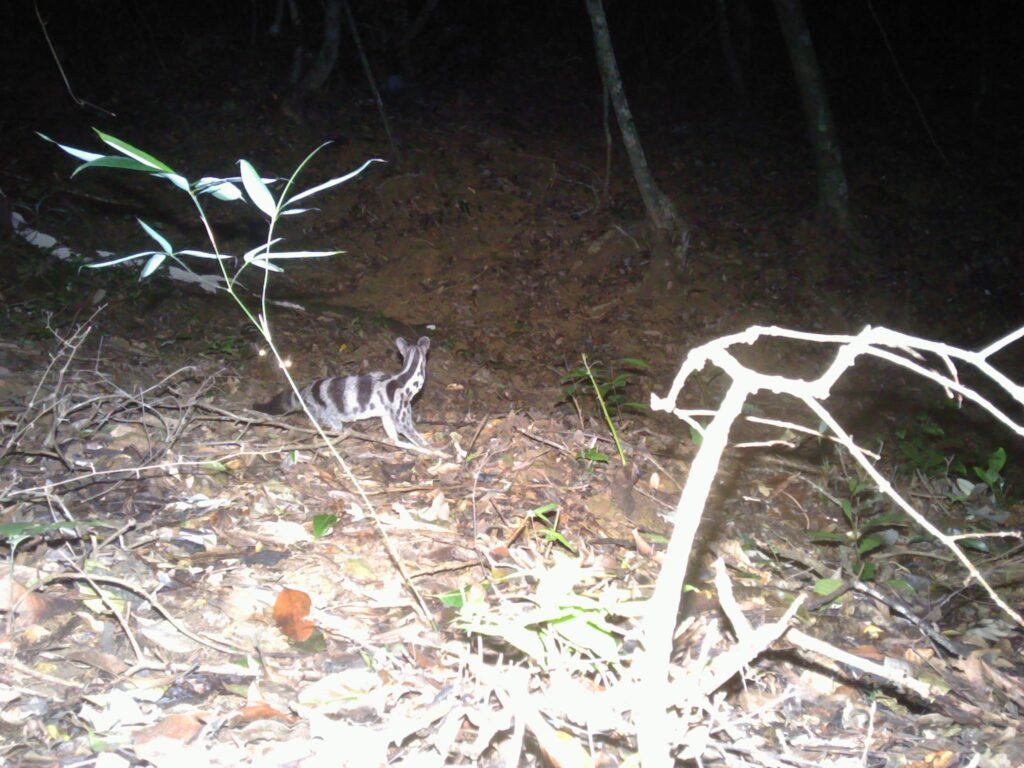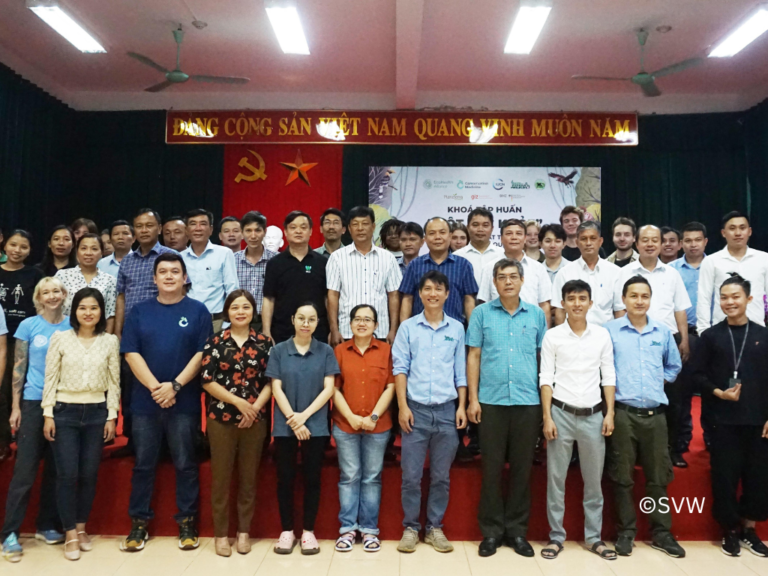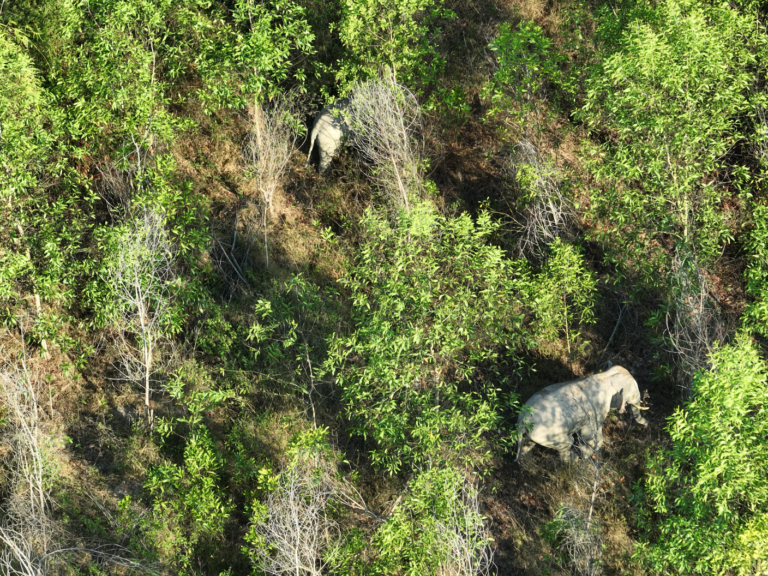Recently, our camera trap recorded a mother and two infants of Owston’s Civets in a protected areas in Vietnam in August, 2021. Every time when we encounter mother and young of any endangered wildlife species, we feel very happy. We are grateful to know that many individuals of that species are still able to continue to reproduce and develop, although these records are currently not many.
Owston’s Civet is an endemic species of Indochina, classified as Endangered by the International Union for Conservation of Nature (IUCN), and protected by Vietnamese law (Decree 64/2019/ND-CP, 06/2019/ND-CP). This species is mainly distributed in Vietnam, Laos and the southernmost of China.

Ex-situ conservation or captive breeding is an essential part in the conservation planning and strategy of many endangered species, including the Owston’s Civet. This is also one of the priority activities proposed in the species 10-year conservation Strategy (2019 – 2029). https://www.cpsg.org/content/conservation-strategy-owstons-civet-chrotogale-owstoni-2019-2029-english
Here are a few reasons why a conservation breeding program is necessary:
– The number of individuals left in the wild of that species is very few, or continues to decline throughout its distribution range. Chances of mating during the breeding season are so low that the population cannot grow;
– Species continue to be under pressure of hunting and habitat degradation. This situation will not be resolved in the near future;
– When the population of wild species decreases excessively, the captive population will be reintroduced into the wild and help the wild populations to survive.
SVW is currently one of the few organizations in Vietnam implementing a species conservation breeding program, the program’s focal species are Owston’s Civet and the Chinese Pangolin.
Considering the experience and ability to implement the program, SVW plans to build a separate conservation breeding center for each species in order to minimize the risks of disease spreading between species, and increase the captive reproduction. Currently, we are developing proposals and necessary documents so that the program can be implemented soon.
There are many conservation organizations around the world that have implemented conservation breeding programs for endangered species, and some of the main limitations of the program are:
– The cost of the program is often very huge
– Many individuals kept in captivity for a long time will struggle to survive when they are released into the wild.
– The habitats of the species continues to be threatened, and animals continue to be hunted and poached, even when they are reintroduced
Despite these limitation, a number of organizations have had success with this reintroduction, including the Black-footed ferrets conservation program in the United States.
SVW is trying to apply the best measures, learning from the successes and failures of other programs so that we could success in restoring populations of these two endangered species.


